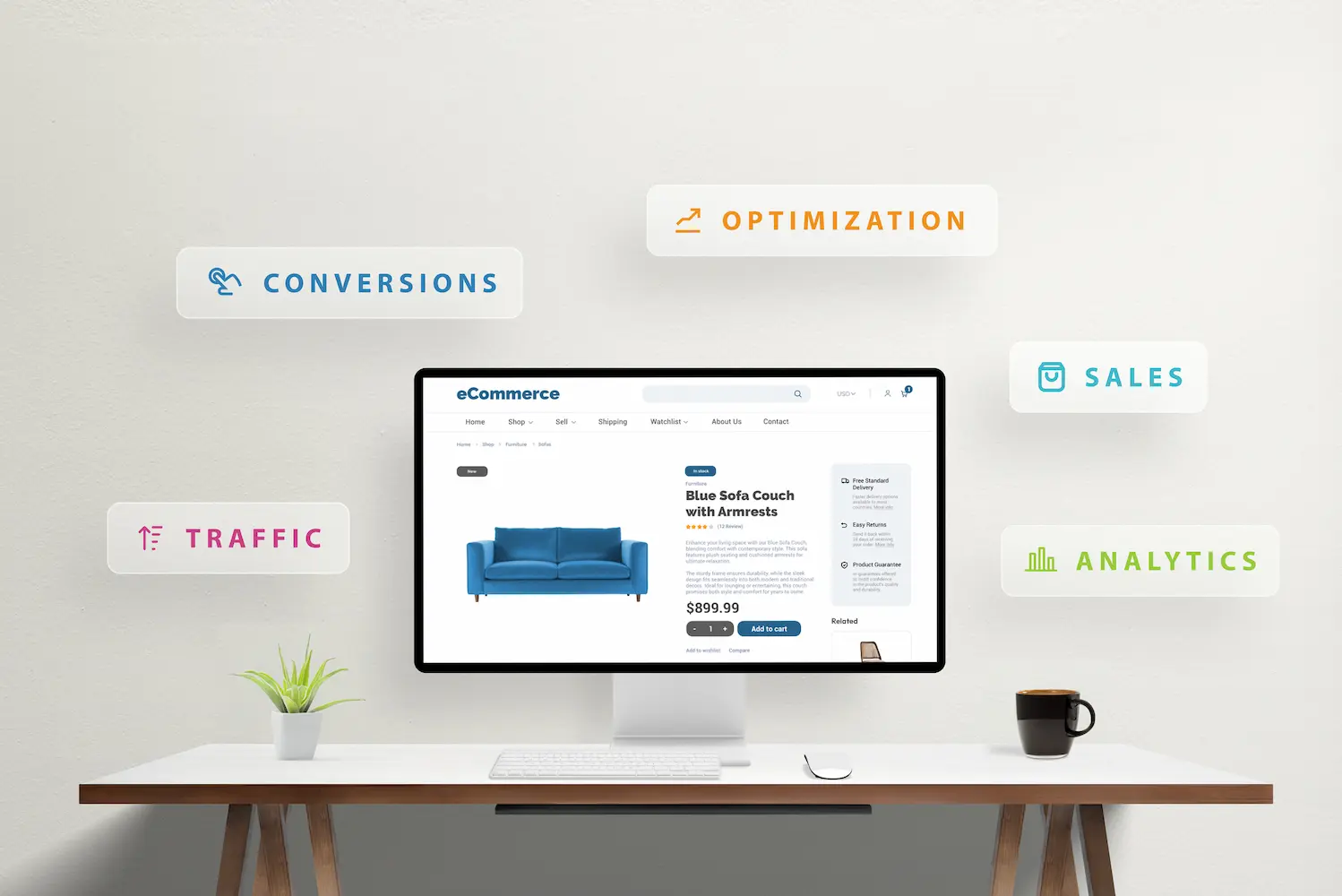Sales configurators help businesses present customizable products in a way that is easy for customers to understand and use. They combine product data, visual representation, and selection rules to guide buyers through available options while preventing errors. The result is a more efficient purchasing process, better product accuracy, and improved customer satisfaction.
In industries with complex or high variation products, managing customization without a dedicated system can be difficult. Customers may become overwhelmed by choices, and sales teams may spend more time explaining compatibility and pricing than focusing on closing the sale. A sales configurator addresses these issues by structuring the decision process, showing the customer only valid options, and updating visuals and pricing in real time. This reduces confusion and speeds up decision making, ultimately making the experience smoother for both buyer and seller.
What is a sales configurator?
A sales configurator is a software application that enables customers to select and customize product features while automatically ensuring that each choice is compatible with the others. It integrates technical specifications, pricing rules, and visual assets into a single interface that allows the customer to see an accurate representation of their configured product.
When a customer makes a choice such as selecting a specific size, color, or accessory, the configurator updates the displayed product and adjusts the price instantly. If a combination is not possible, it will be blocked or replaced with an alternative. This helps customers avoid invalid selections and prevents sales teams from having to manually correct orders.
A study found that 89% of business leaders find product personalization to be invaluable to their business needs. Sales configurators give customers the chance to personalize at will, and offer a game-like interface to do so. The sales configurator software can be used in different sales environments, from online stores to in-person retail. In each case, it ensures consistency by applying the same logic and pricing rules regardless of where or how the customer interacts with the product. This unified approach helps businesses maintain accuracy across all sales channels.
How does a sales configurator work?
The operation of a sales configurator begins with the customer selecting a base product. This initial choice determines the set of options available for product customization. The system applies predefined rules to filter out incompatible combinations, reducing complexity and ensuring the customer only sees valid options.

As the customer makes further selections, the configurator updates the visual representation in real time. This could be through high quality 2D images or interactive 3D visualization, depending on the type of system in use. At the same time, the price is recalculated with each change, giving the customer full visibility over cost implications.
Once the customer completes their selections, the system validates the sales configuration to confirm it meets all necessary requirements. It can then generate documentation such as a quote, a bill of materials, or a production specification. In integrated systems, this data is automatically sent to manufacturing or order management software, removing the need for manual entry and reducing the risk of errors.
This process ensures the buying journey is both guided and flexible. Customers have the freedom to explore product variations while the system ensures they stay within the boundaries of what can be produced.
Types of sales configurators
Sales configurators are designed in different formats, each offering a unique way of presenting and managing customization.
Rule based configurator
A rule based configurator relies on a set of logical conditions to determine which options can be selected. It typically presents choices through text or simple menus rather than visual displays. This type is well suited to products where appearance is not the primary factor but accuracy is essential.
Visual 2D configurator
A visual 2D configurator uses images or diagrams that change to reflect the customer’s choices. It offers a straightforward visual experience without the complexity of 3D rendering. This approach is common for products where showing color, pattern, or layout changes is important but a three dimensional view is unnecessary.
Interactive 3D configurator
An interactive 3D product configurator presents a 3D visualization that the customer can rotate, zoom, and examine from any angle. It is most valuable for products where spatial understanding is important, providing a more immersive experience and helping customers assess proportion, detail, and fit.
Sales configurator features
The effectiveness of a sales configurator depends on the capabilities it offers. Key features include:
- Real time pricing updates that adjust the total cost as customers change product selections
- Dynamic visual configurations that instantly reflects the customer’s choices
- A rules engine that ensures only compatible visual sales configurations are possible
- Exportable output that can include quotes, product specifications, or manufacturing files
- Integration with systems such as CRM and ERP to pass sales configuration data directly into order processing and production workflows
These features work together to reduce complexity, increase accuracy, and provide a more engaging buying experience.
Key benefits of sales configurators
Sales configurators offer advantages that can improve sales performance, operational efficiency, and customer satisfaction.

Faster sales cycles
By giving customers the ability to explore product options and see instant results, configurators reduce the time it takes to finalize a purchase. This allows sales teams to close deals more quickly and customers to move from interest to decision without unnecessary delays.
Reduced errors
With built-in logic to enforce valid selections, configurators lower the risk of incorrect orders. This prevents costly mistakes in manufacturing, reduces returns, and ensures customers receive exactly what they expect.
Higher customer engagement
Interactive visuals and immediate feedback encourage customers to spend more time interacting with the product. This can lead to a greater connection to their purchase, often resulting in higher satisfaction and a greater likelihood of repeat business.
These benefits make sales configurators useful for industries where accuracy, speed, and customer experience are key factors in competitiveness.
Final notes
Sales configurators help bridge the gap between complex product offerings and clear, customer friendly purchasing. By combining product rules, live visuals, and automated pricing, they guide buyers to informed decisions and reduce operational errors. For businesses managing large product catalogs or high product customization demands, they offer a scalable way to deliver consistent and accurate orders.
A well implemented sales configurator can also act as a central hub for aligning sales, marketing, and production. When the same configuration logic, visual configuration assets, and pricing structure are used across departments, the process becomes more accurate and efficient. This reduces miscommunication, shortens production timelines, and creates a unified customer experience. For companies using advanced 3D visualization or a 3D product configurator, this integration can further enhance accuracy and engagement by showing every option exactly as it will appear in reality.
For more information on sales configurators, and to talk to our dedicated team about how the right sales configurator software can uniquely improve your ecommerce site, reach out to us and book a demo.





